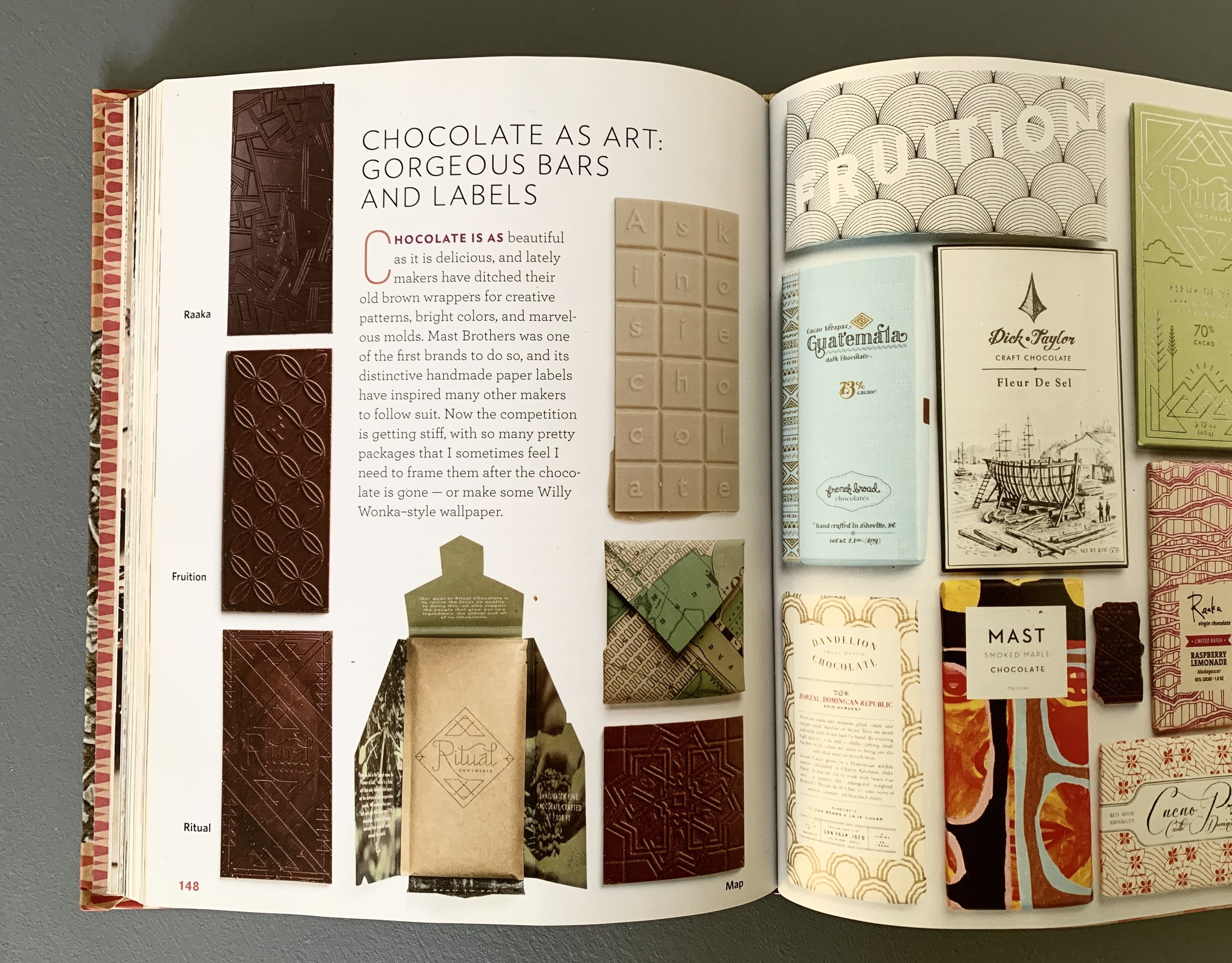
The difference in craft chocolate and bulk industrial-manufactured chocolate:
it’s about INTENTION.
Industrial chocolate is manufactured using automated processes and factory-scaled equipment
in large production runs
quickly
cheaply
uniformly
using bulk, commodity cacao
with a lack of transparency about the entire supply chain

craft chocolate revolutionized chocolate
By breaking the chocolate mould, making bean to bar
in small production runs
with a focus on hands-on processes and craft-dedicated skills
using transparently-sourced cacao
highlighting origin diversity
building producer-to-maker relationships
and pioneering new flavor horizons
the craft side of chocolate
-
A craft chocolate maker chooses which beans to use, selects all the ingredients needed for each batch, and makes chocolate through a series of steps, taking the beans through each step of the process: sourcing, sorting, roasting, cracking + winnowing, refining, and finally, tempering + moulding (and wrapping).
A chocolatier buys and melts pre-made chocolate they then use to make confections and chocolate products.
-
(1) Most craft makers use a drum roaster (like those used to roast coffee beans), while some use convection ovens.
(2) After roasting the beans are cracked into nibs and then winnowed (the shells removed) either by (1) very hands-on/nano-scale by cracking with a mallet/blowing away shell with a hand-held blowdryer or (2) pro-scale using a dedicated cracker (like a Champion juicer) and winnower (an airflow system often powered by a shop vac)
(3) The nibs are refined (crushed and the particle size is reduced) into liquid chocolate in a melanger, which range in size from home kitchen-perfect starter tabletop versions to much larger.
(4) After refining the chocolate is either sieved + stored for later use (allowed to set up into solid blocks) or tempered and moulded. Tempering can be done by hand, or with a tempering machine.
